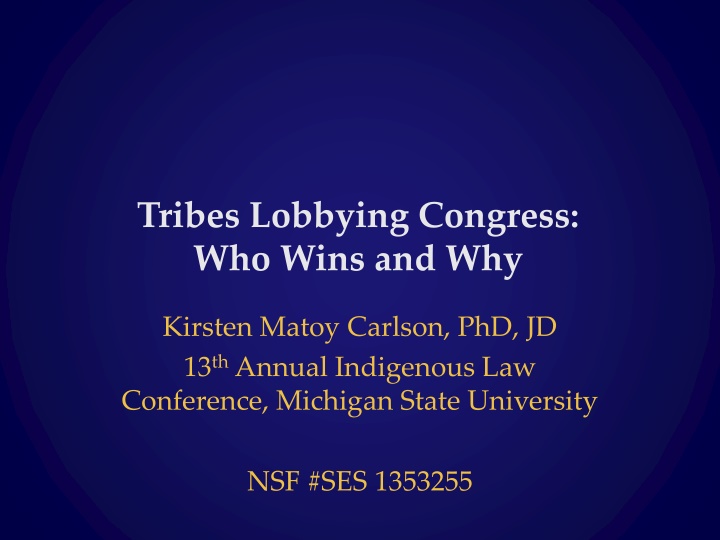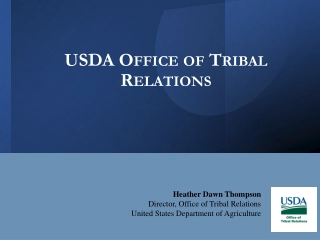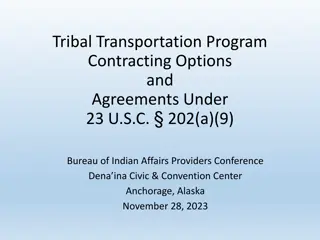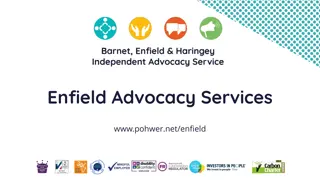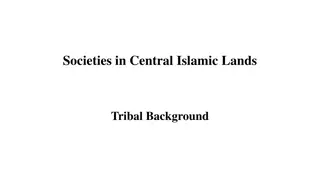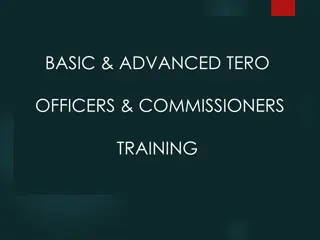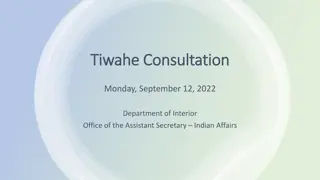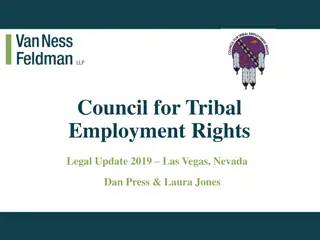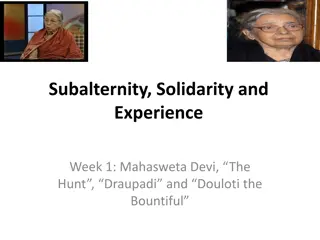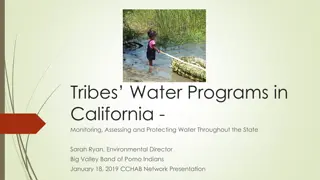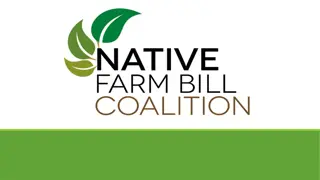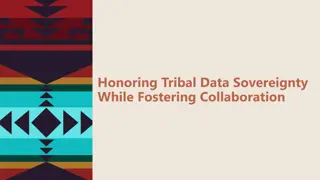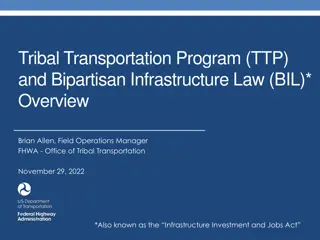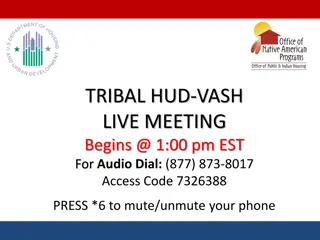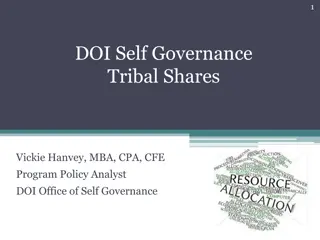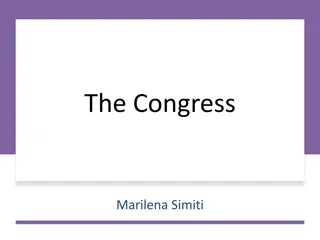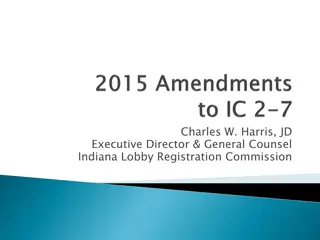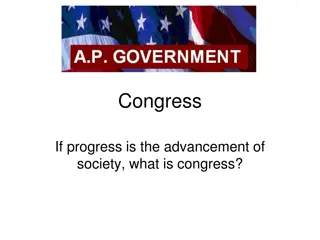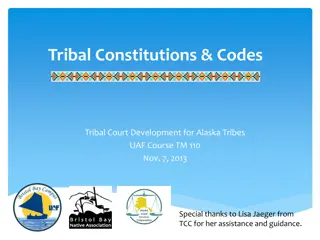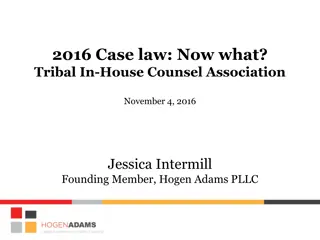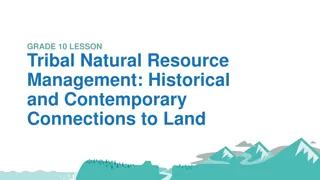Tribal Legislative Advocacy: How Tribes Lobby Congress
Delve into the world of tribal legislative advocacy as explored in Kirsten Matoy Carlson's research. Discover the frequency and types of advocacy tribes engage in, and learn how they leverage legislative advocacy to influence laws. Gain insights into lobbying disclosure reports, historical trends in tribal lobbying, and the financial aspects of lobbying efforts by American Indian organizations and tribes.
Download Presentation

Please find below an Image/Link to download the presentation.
The content on the website is provided AS IS for your information and personal use only. It may not be sold, licensed, or shared on other websites without obtaining consent from the author.If you encounter any issues during the download, it is possible that the publisher has removed the file from their server.
You are allowed to download the files provided on this website for personal or commercial use, subject to the condition that they are used lawfully. All files are the property of their respective owners.
The content on the website is provided AS IS for your information and personal use only. It may not be sold, licensed, or shared on other websites without obtaining consent from the author.
E N D
Presentation Transcript
Tribes Lobbying Congress: Who Wins and Why Kirsten Matoy Carlson, PhD, JD 13thAnnual Indigenous Law Conference, Michigan State University NSF #SES 1353255
Questions How frequently do tribes engage in legislative advocacy? What kinds of legislative advocacy do they engage in? How can tribes use legislative advocacy to change the law?
Uncovering Tribal Legislative Advocacy: Lobbying Disclosure Reports Lobbying Disclosure Reports provide information on who lobbied by year, including name of the organized interest But they have several limits: Only include reported lobbying so may underrepresent who lobbies and how often Only report spending amounts after 1997 Provide very little information on issues lobbied on, making it difficult to determine the influence of the lobbying because it is not tied to an issue or legislative proposal
American Indian Organizations Reporting Lobbying, 1978-2012 350 300 250 200 150 100 50 0 1978 1979 1980 1981 1982 1983 1984 1985 1986 1987 1988 1989 1990 1991 1992 1993 1994 1995 1996 1997 1998 1999 2000 2001 2002 2003 2004 2005 2006 2007 2008 2009 2010 2011 2012
Tribes Reporting Lobbying, 1978-2012 250 200 150 100 50 0 1978 1979 1980 1981 1982 1983 1984 1985 1986 1987 1988 1989 1990 1991 1992 1993 1994 1995 1996 1997 1998 1999 2000 2001 2002 2003 2004 2005 2006 2007 2008 2009 2010 2011 2012
Reported Lobbying by Gaming and Nongaming Tribes, 1978-2012 160 140 120 100 80 60 40 20 0 Nongaming Tribes Gaming Tribes
Amount of Money Spent on Lobbying by American Indian Organizations, 1997-2012
Amount of Money Spent on Lobbying by Tribes, 1997-2012 Indian nations spent an average of $109,408 on lobbying per year 25% of tribes report spending no money on lobbying 50% report spending $40k per year or less 25% report spending over $120k per year
Amount of Money Spent on Lobbying by Gaming and Nongaming Tribes, 1997-2012 Gaming tribes reported spending 2x as much as nongaming tribes Gaming tribes reported spending an average of $135k on lobbying per year Nongaming tribes reported spending an average ~ $52k on lobbying per year
Determining Whether Indian Legislative Advocacy Contributes to Legislative Success Congressional hearings on Indian-related bills allow for evaluation of the influence of Indian testimony on a specific legislative proposal on the bill s enactment. Committee hearings may reflect more the preferences of the committee than the advocacy of the witness so both solicited and unsolicited testimony was included. Data limited to 97th, 103rd, and 109th Congresses.
Indian Advocacy Before the 97th, 103rd, and 109th Congresses Indian witnesses testify at 48% and tribal witnesses at 85% of hearings held on Indian- related bills 203 tribes testified before Congress Each tribe testified at an average of 3.2 hearings Tribes were most likely to testify on pan- tribal bills and in favor of the legislative proposal
Issues Indians Advocate on Before the 97th, 103rd, and 109th Congress Indian witnesses testified on legislative proposals covering a wide range of issues Tribes most frequently testified on bills on claims, housing, federal recognition, gaming, lands, and natural resources Gaming tribes were more likely to testify on bills related to gaming, employment, and health care Tribes most frequently testified for and against bills related to claims, federal recognition, and culture
Tribal Advocacy and Legislative Success .6 .5 Probability of Enactment .4 .3 .2 .1 0 No Tribal Advocacy Tribal Advocacy Tribal Advocacy Tribal testimony on a specific legislative proposal increased the likelihood of legislative enactment in the 97th, 103rd, and 109th Congresses.
Preliminary Conclusions: How Do Indians Advocate Legislatively? Legislative advocacy reported by Indians has increased sixfold since 1978. Indian nations report engaging in different advocacy strategies. Top spenders are not necessarily the tribes most frequently reporting lobbying or testifying before Congress. Gaming tribes report spending more than nongaming tribes.
Preliminary Conclusions: How Can Tribes Use Legislative Advocacy to Change the Law? Tribal testimony on a specific legislative proposal increased the likelihood of legislative enactment in the 97th, 103rd, and 109th Congresses. Tribal testimony may be influential but need to know more about how, when, and why.
